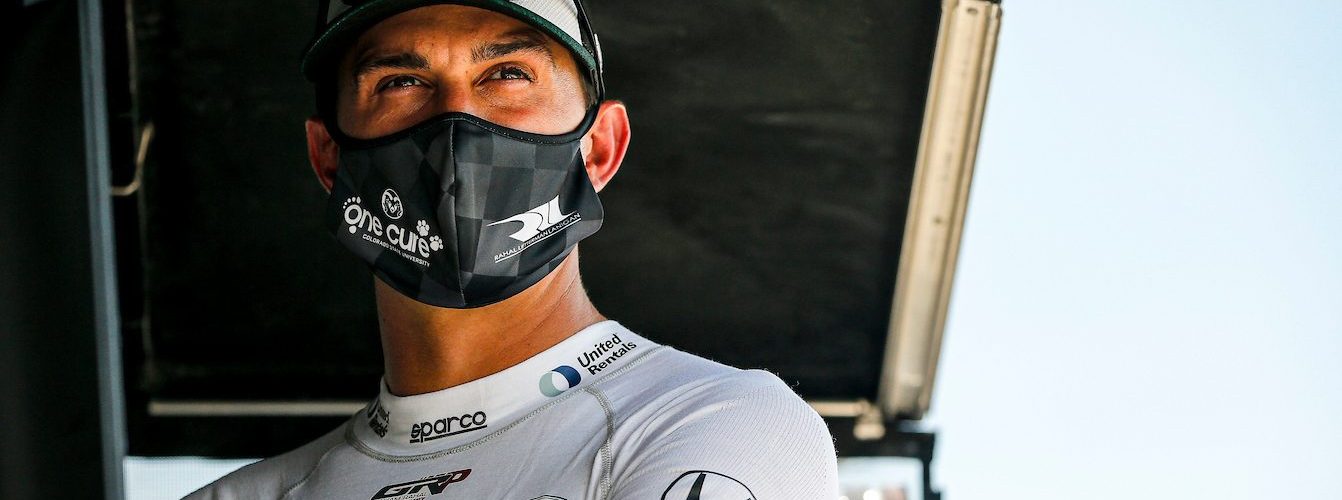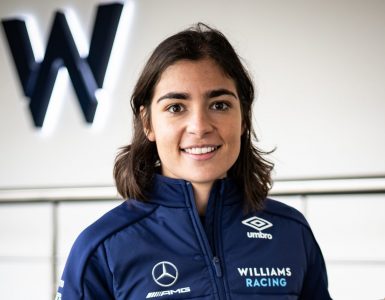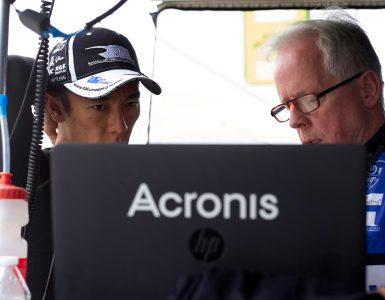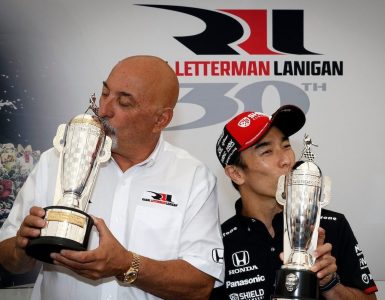The 2020 NTT IndyCar Series has seen a whole host of firsts, mostly in response to the Covid-19 pandemic. It started, pre-virus, with the introduction of the aeroscreen cockpit protection which would have made its race debut at St Petersburg in March, until the street race was postponed, with teams and cars already on site.
A hastily improvised and revised schedule has been constructed with May’s traditional series showcase, the Indianapolis 500, being run in August, having already had a race on the track’s road course in July.
This Friday, October 2, and Saturday Oct 3 the series will be back at Indy for a road course double-header, the IndyCar Harvest GP, making it four races at new owner Roger Penske’s impressively-renovated facility in 2020, helping to make it a 14-race schedule.
One of the local teams, Rahal Letterman Lanigan Racing and driver Graham Rahal is looking forward to returning to Indy, especially as there will be fans onsite, unlike the Indy 500 which the team won with driver Takuma Sato, and Rahal in third. Limited to 10,000 the spectators will be spread out at designated areas in Turns 1 and 4 inside the vast Indianapolis Motor Speedway.
Rahal, the son of team founder and Indy 500 winner Bobby, finished second in July’s GMR Indy GP on the road course. “I was excited when they announced the October Harvest GP races. It’s a place that I’ve always been pretty competitive,” he says. “It’s been a completely different year, with lots of challenges to face that we’ve needed to embrace. The double-header there is going to be very physically demanding and very, very challenging. I’m excited about the opportunity to go back, to perform well and to do what we need to do to be successful.”
Doubleheader race weekend at @ims 🙌🏼 Two tries at redemption from GP 1 and both in front of fans! Who’s coming out 🙋🏻♂️
📸:@Spacesuit_Media pic.twitter.com/bbrPb7zHIj
— Graham Rahal (@GrahamRahal) September 28, 2020
In July’s road course race, the RLL team opted for a two-stop strategy that looked set to pay race-winning dividends for Rahal until a late race incident eliminated his advantage.
“We had a great run there earlier this year, and we hope to make that happen again this time around. We got a little bit unlucky last time with the strategy,” continues Rahal. “We’d played it just perfect and nobody else did, but the yellows came at the wrong time otherwise we’d have won by a large margin. We were disappointed with that.”
The Harvest GP races are a little different, so there won’t be a ‘straight repeat’ on the strategy. The first, on Friday, is a bit longer, and the second is shorter than the race in July, adding to the challenge. One benefit that the RLL team has is the engineering data gathered by team technical partner Acronis to study. They will already have a good starting point for the two single-day events – although the weather in October in Indiana will be significantly different to the heat of July.
“We utilised that data from the last race to be our baseline, absolutely,” says the driver of the #15 car. “When we go this time around we know where to work from, and know what to do. That data is absolutely critical to us and to our performance and to the way we expect to perform. Also the team is fortunate that with Honda we can utilise that in the simulator right before the race weekend. I’m eager to get out there and see how it relates.
“From a temperature perspective we will see quite a difference, so that does change things, but we should be able to take the data that we have, correlate it to the temperature change and everything else, and make it work!”
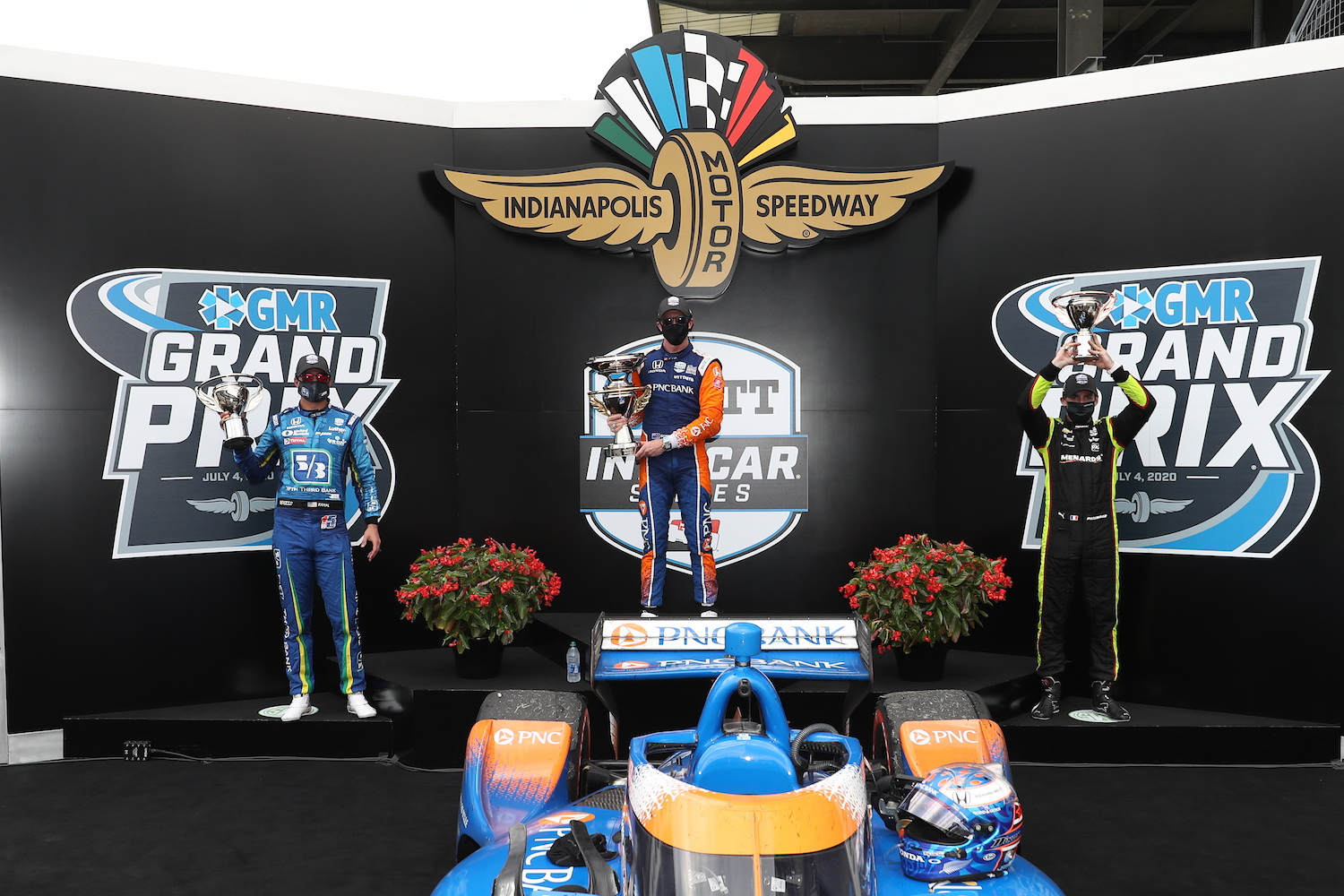
The cooler atmosphere will also benefit the car, and just as importantly the driver, as Rahal explains. “The performance of the cars will be better in the cooler air, so there will be more downforce, more power, all those sorts of things. I think the biggest difference will be from the physical standpoint of the driver. I anticipate it being a lot better for sure.
In July it was very hot, it was our first race back. As a driver you’d done your physical fitness and your training, but as we always say, there’s really nothing like actually driving the real thing. That was clearly a very difficult event! But this is still going to be a huge challenge for every one of us.”
One of the reasons that the July race was made so physically demanding was the new cockpit aeroscreen which limited the cooling air flowing to the driver. The October race might not pose that particular problem. As well as cooler temperatures, the screen has been developed to improve cooling, but there is, of course, a higher chance of rain.
So far, Rahal has only briefly experienced wet conditions with the aeroscreen at Mid-Ohio in qualifying. “It’s a challenge,” he says. “It is strange being in an open cockpit car, but you’re not really getting wet. There’s also not much you can do. The screen won’t get fogged ever, but it does get the residue from the road and everything else on the windscreen and that can make it a little bit of a challenge. You can’t do anything in that case – you can’t reach the windscreen to wipe it off! But again, I embrace it and it’s the same for everybody. We’ve just got to go out there and figure out how to make it work.”
This will be the fifth double-header of the 2020 season after the road course events at Road America, and Rahal’s home track Mid-Ohio, and the ovals at Iowa and St Louis.
“The double headers are pretty demanding,” Rahal says. “However I think everyone is now up to the challenge. We’ve all been driving a lot this year now, so I think that everybody is prepared for what’s to come at Indy. Once we got back going and got into a rhythm of things it’s been a pretty consistent run at all the races from a physical standpoint for all the drivers, so I don’t anticipate it being as difficult as the first time around. Then again, having two of them… It’s like Mid-Ohio. If you had just the one race, it’s fine. But race two… It was everything you could do to get to the stripe at the finish! I think that will be the case at Indy as well.”
Who's ready for a road course doubleheader at @IMS this weekend for the #HarvestGP presented by GMR?
Where will you be watching from?#INDYCAR pic.twitter.com/8KCvN7SZBl
— NTT INDYCAR SERIES (@IndyCar) September 30, 2020

